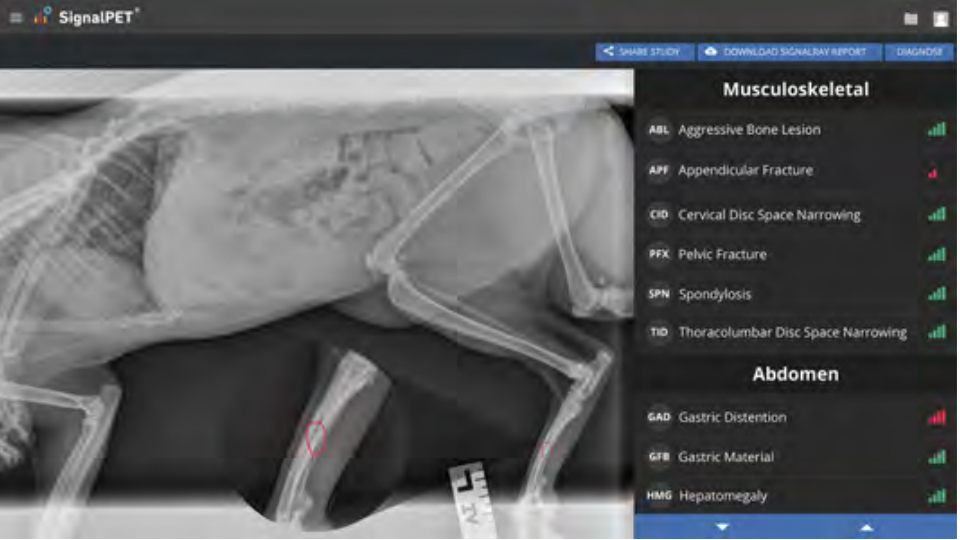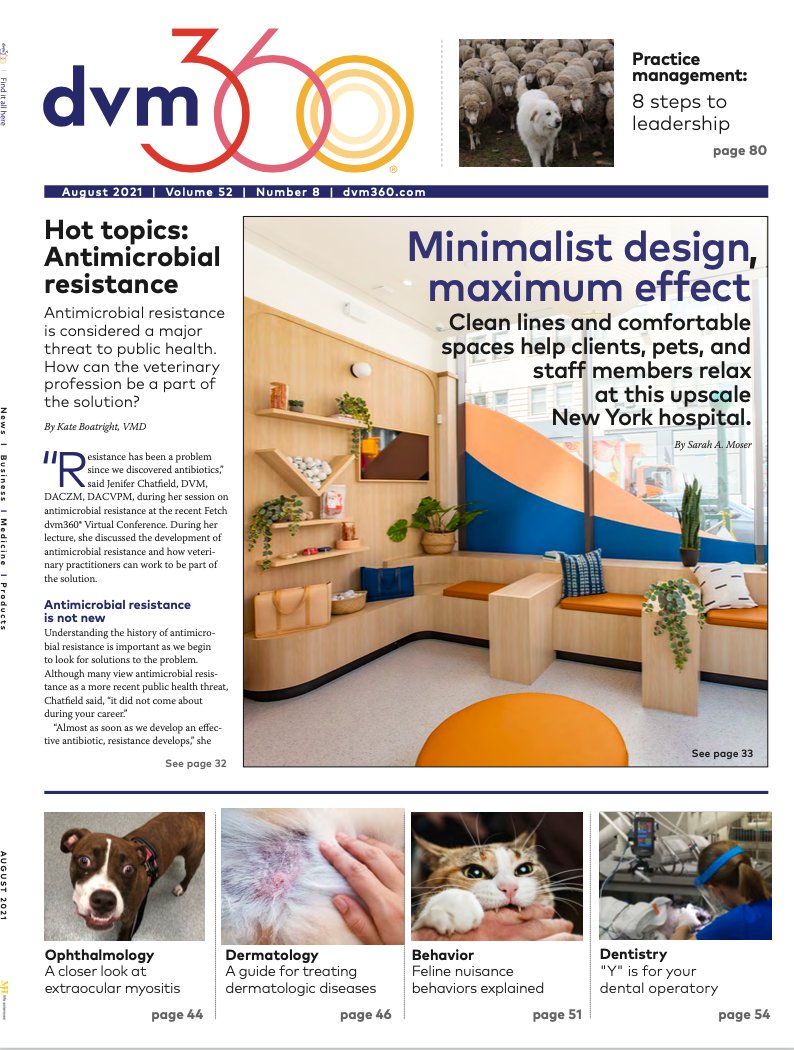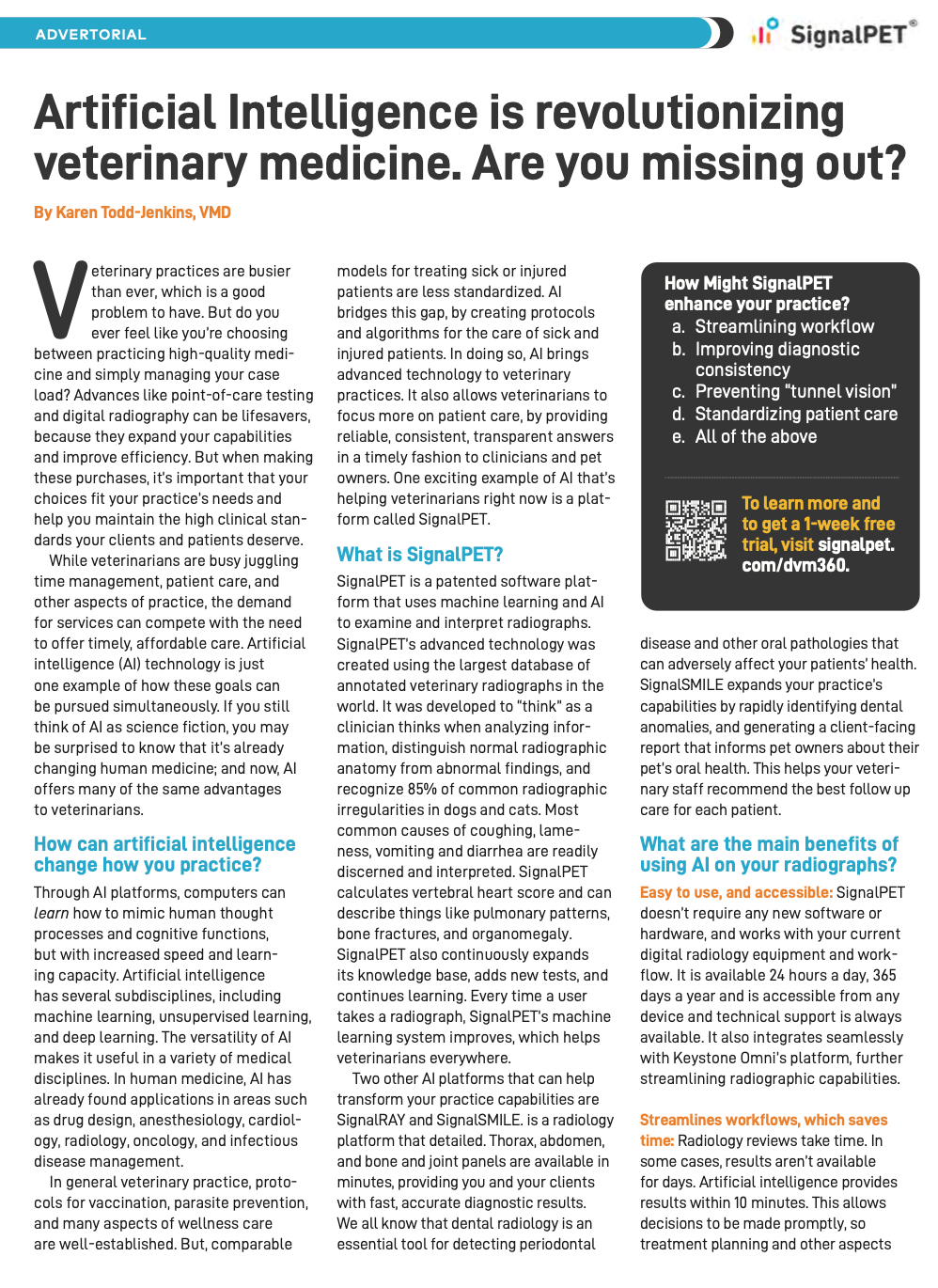Artificial Intelligence is revolutionizing veterinary medicine. Are you missing out?
Learn how these artificial intelligence solutions can help advance your veterinary practice's capabilities.
Veterinary practices are busier than ever, which is a good problem to have. But do you ever feel like you’re choosing between practicing high-quality medicine and simply managing your case load? Advances like point-of-care testing and digital radiography can be lifesavers, because they expand your capabilities and improve efficiency. But when making these purchases, it’s important that your choices fit your practice’s needs and help you maintain the high clinical standards your clients and patients deserve.
While veterinarians are busy juggling time management, patient care, and other aspects of practice, the demand for services can compete with the need to offer timely, affordable care. Artificial intelligence (AI) technology is just one example of how these goals can be pursued simultaneously. If you still think of AI as science fiction, you may be surprised to know that it’s already changing human medicine; and now, AI offers many of the same advantages to veterinarians.
How can artificial intelligence change how you practice?
Through AI platforms, computers can learn how to mimic human thought processes and cognitive functions, but with increased speed and learning capacity. Artificial intelligence has several subdisciplines, including machine learning, unsupervised learning, and deep learning. The versatility of AI makes it useful in a variety of medical disciplines. In human medicine, AI has already found applications in areas such as drug design, anesthesiology, cardiology, radiology, oncology, and infectious disease management.
In general veterinary practice, protocols for vaccination, parasite prevention, and many aspects of wellness care are well-established. But, comparable models for treating sick or injured patients are less standardized. AI bridges this gap, by creating protocols and algorithms for the care of sick and injured patients. In doing so, AI brings advanced technology to veterinary practices. It also allows veterinarians to focus more on patient care, by providing reliable, consistent, transparent answers in a timely fashion to clinicians and pet owners. One exciting example of AI that’s helping veterinarians right now is a platform called SignalPET.
What is SignalPET?
SignalPET is a patented software platform that uses machine learning and AI to examine and interpret radiographs. SignalPET’s advanced technology was created using the largest database of annotated veterinary radiographs in the world. It was developed to “think” as a clinician thinks when analyzing information, distinguish normal radiographic anatomy from abnormal findings, and recognize 85% of common radiographic irregularities in dogs and cats. Most common causes of coughing, lameness, vomiting and diarrhea are readily discerned and interpreted. SignalPET calculates vertebral heart score and can describe things like pulmonary patterns, bone fractures, and organomegaly. SignalPET also continuously expands its knowledge base, adds new tests, and continues learning. Every time a user takes a radiograph, SignalPET’s machine learning system improves, which helps veterinarians everywhere.
Two other AI solutions that can help transform your practice's capabilities are SignalRAY and SignalSMILE offered on a radiology platform that is detailed. Thorax, abdomen, and bone and joint panels are available in minutes, providing you and your clients with fast, accurate diagnostic results. We all know that dental radiology is an essential tool for detecting periodontal disease and other oral pathologies that can adversely affect your patients’ health. SignalSMILE expands your practice’s capabilities by rapidly identifying dental anomalies, and generating a client-facing report that informs pet owners about their pet’s oral health. This helps your veterinary staff recommend the best follow-up care for each patient.
What are the main benefits of using AI on your radiographs?
Easy to use, and accessible: SignalPET doesn’t require any new software or hardware, and works with your current digital radiology equipment and workflow. It is available 24 hours a day, 365 days a year and is accessible from any device and technical support is always available. It also integrates seamlessly with Keystone Omni’s platform, further streamlining radiographic capabilities.
Streamlines workflows, which saves time: Radiology reviews take time. In some cases, results aren’t available for days. Artificial intelligence provides results within 10 minutes. This allows decisions to be made promptly, so treatment planning and other aspects of patient care aren’t delayed. SignalPET’s reliable, point-of-care technology streamlines workflows for veterinary team members. It also means that pet owners get results quickly, so they can work with clinicians to make timely treatment choices for their pet.
CASE: Henry (4 year-old, spayed, female, Domestic Shorthair)
Henry, a 4-year-old spayed female domestic shorthaired cat presented to the clinic limping. Her veterinarian says he initially couldn’t find anything wrong with her. After glancing at her x-rays, he gave Henry a steroid shot and sent her home with antibiotics. However, when he opened up SignalPET later, he saw that the system had identified a hairline fracture in her right rear leg and circled it, something he and his colleague had both missed. He called Henry’s owner and explained what was found. The precision of this tool allowed this pet to get the best possible care and provide transparent answers to the client.

Optimizes your bottom line: SignalPET adds value for clients, which helps bond them to your practice. It’s affordable and easy to use, and its AI technology is less expensive than paying for radiology consultants to review images, which reduces the cost of patient care at your practice.
Offers a second set of eyes: Wouldn’t it be helpful to have a consistent, objective, second set of eyes at your practice all day, every day, to support you and your staff when reviewing radiographs? SignalPET provides that, and more. For inexperienced clinicians or new graduates who need to build confidence reading radiographs, AI levels the playing field so that every radiograph receives an unbiased analysis. Regardless of experience level, anyone can suffer from tunnel vision or subjectivity, overlook a subtle radiographic abnormality, feel rushed to review radiographs quickly, or simply become distracted by other events happening at the practice at any given moment. SignalPET addresses those challenges by consistently and accurately reviewing every radiograph, every time.
Recognizes anatomic variation: Anyone who’s ever taken radiographs knows that the films aren’t always perfect. Sometimes patients move or aren’t positioned perfectly at the moment of exposure. Even “normal” anatomy has inherent variations (eg, normal chest radiographs for a Bulldog, cat, and Greyhound will look different). AI recognizes these normal variations when deciphering radiographic images.
SignalPET’s functionality facilitates identification of pathology and efficiently gets clinicians to the next step, which is deciding whether further diagnostics are warranted, and choosing how to best care for the patient.
Decreases reliance on external radiographic review: Some veterinarians consult with board-certified radiologists to interpret films and suggest a path forward. Normally, the clinician chooses which radiographs are submitted for review, and which ones aren’t. While there’s still a role for this, AI can help mitigate the need for external consults, for a fraction of the cost, only $10/study. Following examination of radiographs, if a veterinarian still wants a consult and review with a radiologist, SignalPET allows them to easily share test results and images. Having SignalPET at your practice offers the best of both worlds: a point-of-care platform that consistently and objectively reviews every radiograph, and an option to consult with a radiologist when you decide it’s necessary.
Provides a higher standard of care: By using SignalPET to read all the practice’s radiographs, every patient benefits from a higher standard of care. Instead of deciding which patients’ radiographs will be submitted for review by a radiologist and which ones won’t, offering the service to all pets ensures a complete review each time. This consistency promotes better patient care, while safeguarding against user subjectivity and clinician fatigue.
SignalPET’s software also generates a client-friendly radiology report that can be printed or emailed to pet owners for their medical records. This user-friendly report demonstrates the significance of the radiographic study, so the clients can see the value of what they paid for. This enhances customer engagement and satisfaction with the practice, which translates to increased compliance with your recommendations.
So, how can you get started with SignalPET?
If you’re interested in seeing this AI radiology technology at your practice, SignalPET makes it easy for you. By signing up for a 1-week free trial, you can start getting your instant test results on all your x-rays and see the value first-hand.
The bottom line: What’s in your future?
In-house and point-of-care diagnostics have become commonplace at many veterinary practices. Twenty-five years ago, it was probably hard to believe how heavily clinicians would rely on these advances, which have become our new normal in many ways. In a similar way, AI has already been incorporated into human medicine, and it appears to be part of the future for veterinary practice, too.
Today, AI is already helping veterinarians improve efficiency and consistency when performing radiographic studies.
AI innovations like SignalRAY and SignalSMILE are already taking veterinary practices to the next level, and represent the future of the industry. What’s in your future?
References
- Noorbakhsh-Sabet N, Zand R, Zhang Y, et al. Artificial intelligence transforms the future of health care. Am J Med. 2019 Jul;132(7):795-801.
- Jiang F, Jiang Y, Zhi H, et al. Artificial intelligence in healthcare: past, present and future. Stroke Vasc Neurol. 2017 Jun 21;2(4):230-243.

